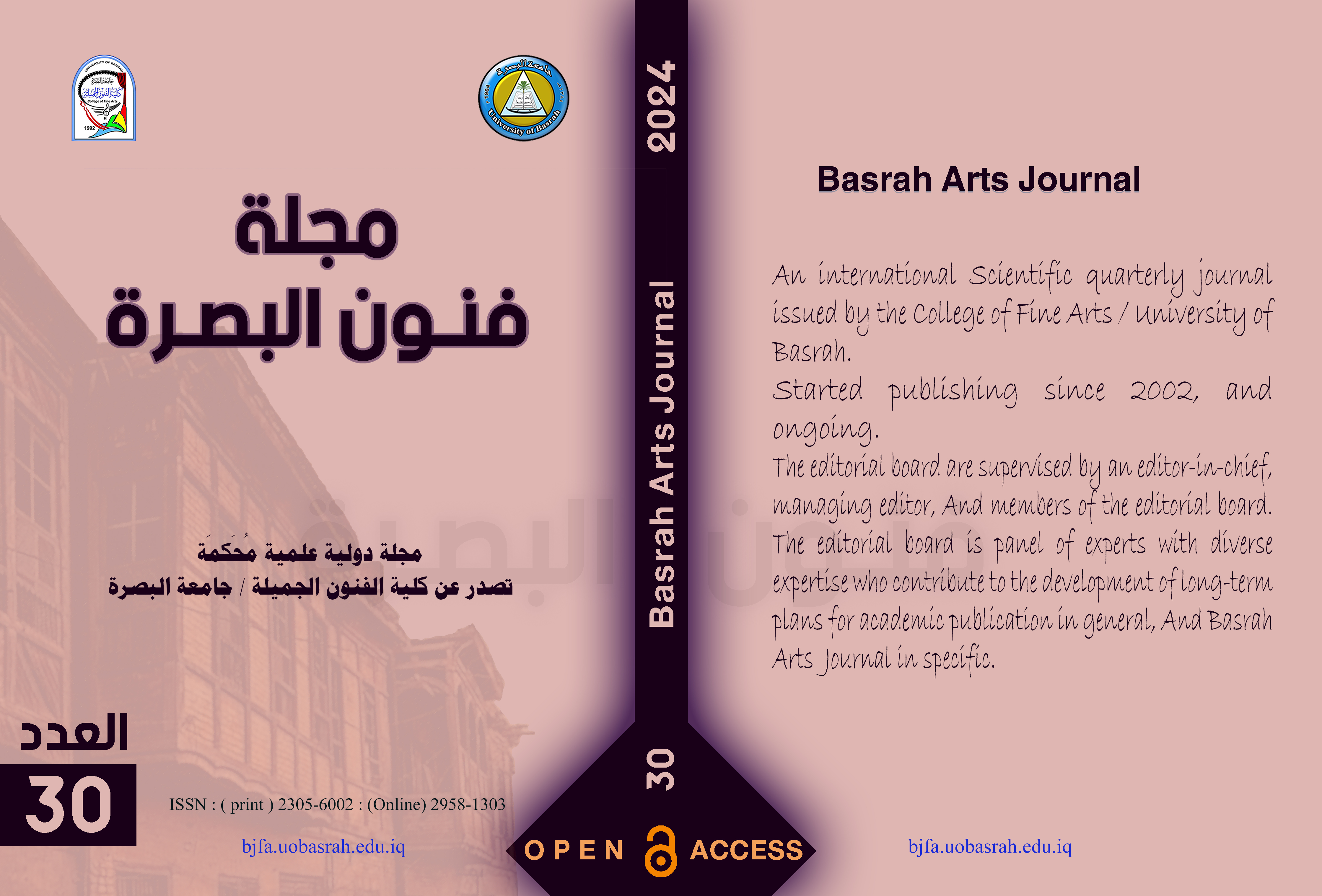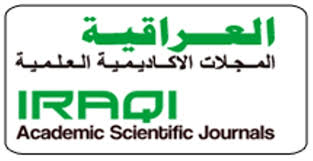The directorial vision of the Iraqi theatre shows is intertwined between style and harmony
DOI:
https://doi.org/10.59767/2024.08/30.8Keywords:
correlation, Vision, style, harmonyAbstract
Theatre is a human, social, ethical, scientific and intellectual value with its full impact and impact It is the product of human thought associated with awareness, perception, imagination, and interactions of ideas, visions and treatments in a synthetic process to integrate, interconnect and interfere with sensory experiences related to extractive treatments. and thus the outcome of a set of ideas, opinions and experiences within the relationships of artistic values, To make the directorial values subject to intellectual attitude and aesthetic visions at varying levels determined by the director's creative thought In spite of the cultural and ideological shifts between generations, which enrich the theatrical discourse and give it a diversity of form and content to the nature of the theatrical show, He went on to monitor these relationships and relationships among pioneers and young people and indicate their artistic and aesthetic impact The course of scientific research was divided into four chapters, as shown below. Methodological Framework II/Chapter II (Theoretical Framework) came on researchers was the first under the heading The second research, entitled "Engagement as an artistic concept between style and vision and the indicators produced by the theoretical framework, chapter III. The researcher went to a research sample of the presentation of Karok's play, chapter IV, where the researcher incorporated the findings, conclusions and list of sources.
References
Aldaghlawy, H. J. (2013). human rights & directing treatments in the Iraqi theatrical performance. Basrah, Iraq: University of Basrah. doi:http://dx.doi.org/10.5281/zenodo.7779863
Aldaghlawy, H. J. (2024). The aesthetics of forming acting performance in children's theater performances. Al-Academy(112), 209-222. doi:https://doi.org/10.35560/jcofarts1262
Aldaghlawy, H. J. (2024). Visual rhythm in the Iraqi theatrical performance. Journal of Arts and Cultural Studies, 3(1), 1-9. doi:https://doi.org/10.23112/acs24021201
Biomi, M. A. (1990). Valuable Sociology. Alexandria, Alexandria: Alexandria: Dar al-Marefa University.
Conference, I. M. ( 2008). International Monetary Conference: Transformations of Contemporary Arab Discours. (p. 169). Jordan: Yarmouk University, World Book Wall.
Ghanaimi, H. M. (1973). Modern Literary Criticism. Beirut: Beirut: Dar al-Awda.
Hadi, A. Q. (1980). Contemporary Man at Herrert Markuz. Beirut: Beirut: Arab Foundation for Studies and Publishing.
Hamid, H. E. (1985). Arab Youth Values. Cairo, Egypt: Publications of the First Conference of Psychology in Egypt.
Hamid, S. A. ( 1994). aesthetic preference, study in taste psychology (Vols. (Kuwait: National Council for Culture, Arts and Literature). Kuwait, Kuwait.
Hanoura, E. A. ( 1985). Arab Youth Values. Cairo, Egypt: Publications of the First Conference of Psychology in Egypt.
Jaber, A. M. ( 2003). Strategy of Redemption in Modern Arab Poetic Discourse, Signs of Criticism, 46th. Saudi Arabia, Saudi Arabia: Jeddah Literary Club.
Mohammed, B. A. ( 2005). Modern Directorial Methods and Theatrical Lighting. Baghdad , Iraq: unpublished Master's thesis presented to Baghdad University, Faculty of Fine Arts.
Nahad, S. (1980). Theatre between Art and Thought. Baghdad, Iraq: Baghdad, Cultural Affairs House.
Oviatikov. ( 1979). Summary of the History of Aesthetic Theories, Translation as Saqqa. In S. Nova. Beirut: Dar al-Farabi.
Peter, B. ( 1983). The Empty Place, Translation: Sami Abdul Hamid. Baghdad, Iraq: Baghdad University Press.
Qais, o. (n.d.). Music and Place. Former Source.
Qays, o. (2016). The Psychological Aspects of Theatrical Music (Vol. 13). Basra, Iraq: Basra Art Magazine.
Qays, o. (2019). Music and Place. Sharjah: Sharjah: Arab Theatre Authority.
Qays, o. (2021). Music in Theatre How We Understand It. Amman: Amman: Dar Radwan.
Qays, o. (2023). The Audible Equivalent, Reading and Analysis in Iraqi Theatre Music. Baghdad, Iraq: Baghdad: Al-Shouyen Cultural House, 2023.
Saliha, N. (1980). Theatre between Art and Thought. Baghdad, Iraq: Baghdad, Cultural Affairs House.
Walan, B. (1998). Mohammed Khair Al-BaqaiText Theory, Translation. Syria: Syria: CCD Press.
Downloads
Published
How to Cite
License
Copyright (c) 2024 Fathi Shaddad Khudhair, Dr.Qays Oudah Qasim (Author)

This work is licensed under a Creative Commons Attribution 4.0 International License.







